Latest Review

2018 Mercedes-AMG CLS53 review
Sleek ‘coupe’ gains a new high-tech heart
Fifty-three, then. Not 63, not 43 and, heaven forbid, not 65.
The new Mercedes-Benz CLS – the sleek four-door coupe now into its third generation – is here, and the rapid AMG variant, the 53, is almost as significant as the fact that the car itself is new. Let’s deal with the CLS bit first.
It’s a new CLS, which means it sits on Benz’s large-car platform with frameless windows and seating for five. It’s also promising to do the same ‘sleeker E-Class thing’ it has done for the past 15 years.
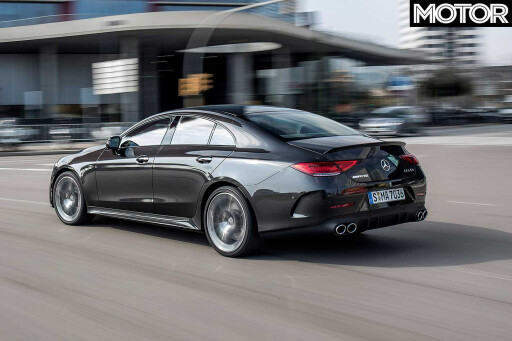 To that end, it’s E-Class sized, 4.98m long, with a range of turbocharged and electrically enhanced diesel and petrol engines. So with ‘53’ a new AMG naming strategy has emerged, as it has for the regular models, where an increasing number indicates merely an increasing power output, not the engine capacity.
To that end, it’s E-Class sized, 4.98m long, with a range of turbocharged and electrically enhanced diesel and petrol engines. So with ‘53’ a new AMG naming strategy has emerged, as it has for the regular models, where an increasing number indicates merely an increasing power output, not the engine capacity.
On some models, a 3.0-litre straight six-cylinder engine becomes the AMG 43, while there’s also the 4.0-litre twin-turbocharged V8 we all now know as the 63. Between these, AMG reckons there’s enough room to slot a 53 derivative. Whether a particular car will get 43, 53 or 63 options will, ultimately, be at AMG’s whim.
The 53 powerplant is a 3.0-litre of extraordinary complexity. Deep breath. It’s an inline six-cylinder petrol, mounted longitudinally, all of whose exhaust outlets pass through a single, large, twin-scroll turbocharger mounted high and next to the exhaust ports.
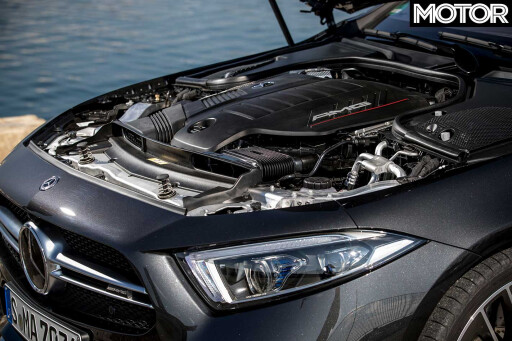 However, to cover the inevitable turbo lag from this there is also an electrically powered compressor, located on the other side of the block, just before an intercooler right next to the inlet ports. This then helps suck air through the induction tract before the big turbocharger is boosting properly. Following? Good.
However, to cover the inevitable turbo lag from this there is also an electrically powered compressor, located on the other side of the block, just before an intercooler right next to the inlet ports. This then helps suck air through the induction tract before the big turbocharger is boosting properly. Following? Good.
The inlet for that compressor comes after the big turbo, where a variable stopper in the main inlet tract, which runs around behind the engine, can divert a little, all, or any combination of air through a smaller tube to the electric compressor, after which, suitably pressurised, it flows back to the main inlet tract just before a throttle butterfly. Still following?
Anyway, it makes 320kW and 520Nm, which is quite a lot in itself. But in addition to both of these forced inductors, mounted between the engine and the nine-speed automatic gearbox sits an integrated starter/generator (ISG), an alternator/starter motor and flywheel combo, which can contribute 16kW and no less than 250Nm to the engine’s already imposing output.
 But rather than it just spinning up to reduce turbo lag, which doesn’t necessarily help increase pressure into the intake system, it’s apparently just as useful for it to drag slightly at low revs, developing electricity as it does, which it passes onto the electric compressor. And it’s that which spools the inlet pressure by dragging air through the turbo, helping that to spin up as it goes, too, thus reducing overall lag instead. Right?
But rather than it just spinning up to reduce turbo lag, which doesn’t necessarily help increase pressure into the intake system, it’s apparently just as useful for it to drag slightly at low revs, developing electricity as it does, which it passes onto the electric compressor. And it’s that which spools the inlet pressure by dragging air through the turbo, helping that to spin up as it goes, too, thus reducing overall lag instead. Right?
Look, I don’t know, my head hurts with all the trickery. I suppose the short of it is that getting air through the engine is key, so inlet pressure rather than engine speed itself is king.
Ultimately, though, all of this power goes to the CLS’s rear wheels most of the time, with a standard all-wheel drive system on all models diverting it to all four when the rears threaten to slip. Unlike, say, the E63 S AMG, you can’t lock the 53 into rear-drive mode for adolescent slides. Which is perhaps just as well.
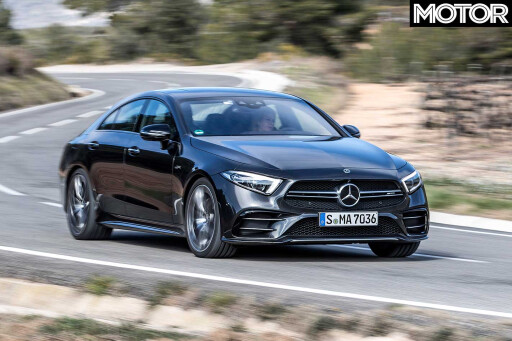 Our international drive takes place in Spain during the first time for about a decade that it has experienced snowfall. So our CLS53 is wearing winter rubber, which, AMG engineers tell me, will soften the way it grips and steers.
Our international drive takes place in Spain during the first time for about a decade that it has experienced snowfall. So our CLS53 is wearing winter rubber, which, AMG engineers tell me, will soften the way it grips and steers.
One of the challenges of the 53 was, by all accounts, to make it feel sufficiently different from a regular CLS to satisfy AMG boss Tobias Moers, who’s quite particular.
Full-fat AMGs do have quite a distinct character: they’re loud, brash and way more capable these days than the hot rods they were a decade or so ago but still dominated by their V8 engines. That’s a harder character to inject with a straight six, obviously, especially one whose exhaust is so muted by the turbo and which, by definition, is a bit semi-skimmed next to a 63. But the engine is sparky.
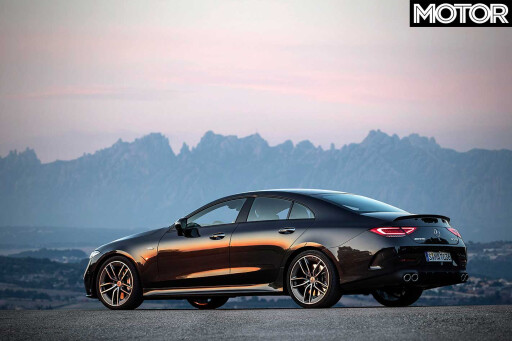 It’s by no means loud, but throttle response and linearity really are exceptional, with a rev limit at nearly 7000rpm and a character and note that has shades of BMW M car.
It’s by no means loud, but throttle response and linearity really are exceptional, with a rev limit at nearly 7000rpm and a character and note that has shades of BMW M car.
It’s a belting engine, in fact. I wonder if Aston Martin, part owned by Daimler as it is, has thought about one day dropping one into a Vantage...
And if regular wheels and tyres – 20-inch and 21-inch will be most buyers’ norms, we suspect – sharpen the steering over these winters, it’ll be intensely responsive for a big sedan. Okay, okay, big coupe. Because accuracy and steering response are already great.
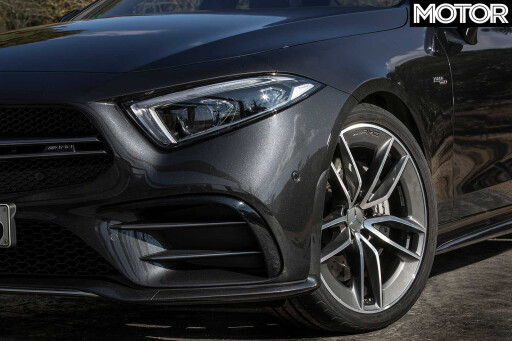 It’s probably more responsive in regard to steering, I’d say, than a BMW M5, while the standard air springs bring a level of both control and compliance where coil springs tend to force a compromise to one or the other; only this comes without the echoey ‘sproing’ that affects some bagged suspension.
It’s probably more responsive in regard to steering, I’d say, than a BMW M5, while the standard air springs bring a level of both control and compliance where coil springs tend to force a compromise to one or the other; only this comes without the echoey ‘sproing’ that affects some bagged suspension.
Air springs, although optional rather than standard as they are on the AMG, were also fitted to the two other CLSs I’ve tried – one being the wickedly fast 400d, with a 3.0 straight-six diesel, 250kW and the new EQ Boost system.
Whatever engine your CLS comes fitted with, though, it makes no difference to the way it feels inside, which is little short of excellent.
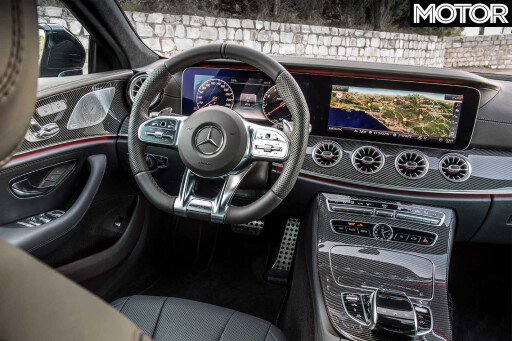 In overall cabin layout and ergonomic decency, things mirror the E-Class here: the driving position is spot on and dead straight, with a hugely adjustable wheel and clear, digital instrument panel, plus central monitor and one of motoring’s better infotainment systems.
In overall cabin layout and ergonomic decency, things mirror the E-Class here: the driving position is spot on and dead straight, with a hugely adjustable wheel and clear, digital instrument panel, plus central monitor and one of motoring’s better infotainment systems.
Headroom in the rear is, obviously, a bit tighter than in a conventional saloon, for the passengers you probably won’t have anyway, and the boot’s of a similar ‘yeah, fine, whatever’ capacity. If it’s not big enough, there’s always the E-Class, which is handy.
Overall, whether equipped with a lesser engine or with the new AMG 53 unit, the impression you get from the CLS is one of slickness. Even the 53 is never in-yer-face, never urging you to go harder or, in Aussie parlance, ‘begging to be fanged’.
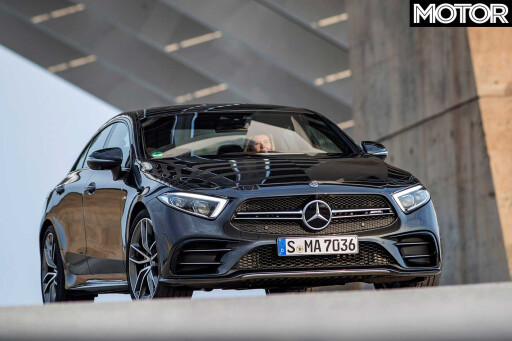 Eventually, it turns out Moers was satisfied that the 53 was AMG-ish enough to pass muster, but it took a lot of iterations and a lot of tweaks to get there.
Eventually, it turns out Moers was satisfied that the 53 was AMG-ish enough to pass muster, but it took a lot of iterations and a lot of tweaks to get there.
Perhaps in grippier conditions, and on normal rubber, the 53 would feel more like a true AMG than it does to me here, but then I don’t mind if it doesn’t. Perhaps I’m less picky than Moers, because it strikes me there’s not a lot wrong with it the way it is.
2018 MERCEDES-AMG CLS53 SPECS:
Engine: 2999cc inline-6, DOHC, 24v, turbo
Power: 320kW @ 6100rpm
Torque: 520Nm @ 1800-5800rpm
0-100km/h: 4.5sec (claimed)
Weight: 1905kg
Price: $179,900
Like: Blends performance and luxury; debuts EQ Boost tech; cheaper than outgoing CLS63
Dislike: Is it angry or fast enough to be a true AMG? Lacking aural appeal of V8



